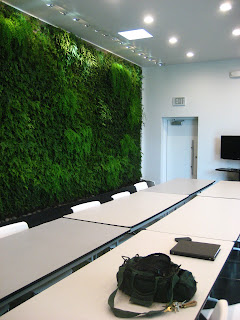Bradbury
Thompson was born not too far from our own university here in Lawrence –
he was born in Topeka, Kansas
in 1911. He was educated at Washburn University, where he studied
printing production. There he developed his skills as a student editor
and designer. Thompson learned the printing business, from typesetting
to binding, and graduated in the year 1934. He kept
in contact with the university throughout his graphic design career and
later worked with Washburn University to create the Washburn College
Bible. This book is considered to be the “most significant development
in Bible typography since Gutenberg first published
his masterpiece in 1455” (RIT Libraries).
Thompson also developed more than ninety stamp designs, making him the
most prolific of American stamp
designers. His unique employment of the letter press process produced
an unprecedented typographic style and book spread layouts. One of his
successful typographic projects was his publication of
Alphabet 26, labeled as a
monoalphabet, which “contained only 26 unique characters, case
was established by size only instead of entirely new characters (i.e.
r/R, e/E, a/A)” (Design Is History). His name dominated the graphic
designer commotion throughout his career.
One of his most well-known contributions to the design world is his letter press work for the Westvaco Corporation. “Westvaco
Inspirations was a promotional journal produced by the Westvaco
Corporation, formerly known as the West Virginia Pulp and Paper Company.
The purpose of the journal was to highlight the printing processes and
quality of paper achieved by the Westvaco
paper Mills” (RIT Libraries). Thompson produced more than 60 issues of the
Westvaco Inspirations, all of which displayed his excellent
intuition for strong design. Overall, his work is characterized by bold,
contrasting, and layered colors (similar to those you would see by
using pure printer ink, such as Magenta, Cyan, Yellow,
Black and the mixture of them) and distinctive combinations of
typographic and graphic features. “He has explored and expanded the
relationship of type with photography, with primitive and folk art, and
even with the evanescent patterns of the performing
arts and children’s play” (J. Carter Brown,
Art of Graphic Design). Specifically, his pages for the
Westvaco Inspirations typically demonstrated visually balanced
arrangements of text, symbols, and graphics, all united with his
exceptional understanding of color relations. “Brad Thompson adapted the
fine arts to his own use in innovative ways: exploring
new combinations of type and image in
Westvaco Inspirations; reusing period engravings to illustrate
classic American books; and illustrating with Old Master paintings the
King James Bible” (J. Carter Brown,
Art of Graphic Design).
Two quotes from the designer I found particularly interesting:
“There is no creative aspect of graphic design more rewarding than the indulgence in play.”
~Bradbury Thompson
“Each letter is based on a traditional geometric shape, and when one is placed together with others of its kind,
new graphic designs come to life”
~Bradbury Thompson
Works Cited
"1977 Hall of Fame: Bradbury Thompson." Art
Directors Club: 1977 Hall of Fame. Art
Directors Club, 2012. Web. 15 Apr. 2012.
<http://www.adcglobal.org/archive/hof/1977/?id=277>.
"Bradbury Thompson." Design Is History. Web. 12 Apr. 2012.
<http://www.designishistory.com/1960/bradbury-thompson/>.
"Bradbury Thompson." RIT
Libraries. Rochester Institute of Technology. Web. 12 Apr. 2012.
<http://library.rit.edu/gda/designer/bradbury-thompson>.
Brown, J. C. "An Appreciation." Foreword.
Bradbury Thompson: The Art of Graphic Design. By
Bradbury Thompson. New Haven: Yale UP, 1988. Viii-Ix. Print.
"Westvaco Inspirations - Design by Bradbury Thompson." Grain Edit. Grainedit, 2007. Web. 15
Apr. 2012. <http://grainedit.com/2008/02/04/westvaco-inspirations-design-by-bradbury-
thompson/>.

















































